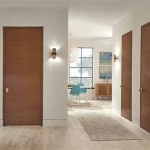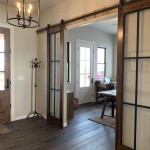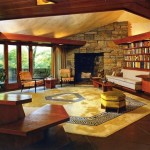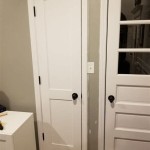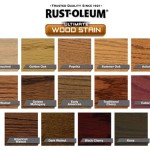Classic Interior Design Style: An Enduring Definition
Classic interior design represents a timeless aesthetic, drawing inspiration from historical periods and emphasizing elegance, symmetry, and sophistication. It transcends fleeting trends, offering a comfortable and refined living space characterized by a sense of order and harmony. Understanding the core elements of classic design is crucial for anyone seeking to implement this style within their own home or project.
The style is not merely a collection of antique furniture or ornate details. It is a cohesive approach that considers architectural elements, color palettes, materials, and furnishings to create a distinct visual language. The overall aim is to evoke a sense of grandeur and permanence, often associated with European aristocracy and historical estates, while maintaining a livable and welcoming atmosphere.
Key Characteristics of Classic Interior Design
Several key characteristics define classic interior design. These elements, when combined effectively, contribute to the style's enduring appeal and distinct visual identity.
Symmetry and Balance: A cornerstone of classic design is its emphasis on symmetry and balance. This is often achieved through the mirroring of furniture arrangements, architectural features, and decorative accessories. For example, matching sofas flanking a fireplace, identical lamps placed on either side of a console table, or artwork hung in a symmetrical arrangement above a bed. This deliberate arrangement creates a sense of visual harmony and order, contributing to the overall feeling of tranquility and sophistication. The use of symmetry isn't just about visual appeal; it also contributes to a sense of stability and permanence. Consider the architectural elements themselves; windows, doors, and even molding are often designed symmetrically to reinforce this principle. Even minor details, like the placement of cushions on a sofa, are often carefully considered to maintain a balanced and visually pleasing arrangement.
Elegant Furniture and Upholstery: Classic interiors feature furniture crafted from high-quality materials such as solid wood, often featuring intricate carvings and details. Upholstery fabrics are typically luxurious and durable, including materials like velvet, silk, linen, and leather. Furniture styles often draw inspiration from historical periods, such as Queen Anne, Louis XV, or Chippendale, but are often adapted for modern comfort and functionality. These pieces are chosen not just for their aesthetic appeal but also for their craftsmanship and longevity. Color palettes for upholstery tend to be muted and sophisticated, often featuring neutral tones like beige, cream, and gray, accented with richer hues like burgundy, forest green, or navy blue. Patterns, when used, are typically subtle and elegant, such as damask, floral prints, or stripes. The attention to detail in furniture selection and upholstery is paramount in creating a classic interior.
Sophisticated Color Palette: The color palette in classic interior design usually leans towards neutral and sophisticated shades, providing a calming and elegant backdrop. Cream, beige, ivory, and soft gray are commonly used for walls, serving as a versatile canvas for layering other elements. These neutral tones create a sense of spaciousness and allow architectural details and furnishings to stand out. Accent colors are often introduced through upholstery, artwork, and accessories, typically in richer, more saturated hues like gold, burgundy, navy blue, or emerald green. These accent colors add depth and visual interest to the space without overwhelming the overall neutral palette. The careful balance between neutral and accent colors is essential in creating a sophisticated and harmonious classic interior. Metallics, particularly gold and silver, are often incorporated through lighting fixtures, picture frames, and decorative objects, adding a touch of glamour and sophistication.
Architectural Elements in Classic Design
Architectural details play a vital role in establishing a classic interior design style. These features often contribute significantly to the overall elegance and grandeur of the space.
Intricate Moldings and Millwork: Crown molding, wainscoting, and baseboards are essential elements in classic interiors. These architectural details add depth and dimension to walls and ceilings, creating a sense of formality and sophistication. Moldings are often elaborate, featuring intricate carvings and detailing that enhance the visual appeal of the space. The level of detail in the moldings can vary depending on the desired level of formality and the historical period being referenced. Wainscoting, which is decorative paneling that covers the lower portion of a wall, can be used to add texture and visual interest, as well as protect walls from damage. Baseboards, which run along the bottom of walls, provide a finished look and conceal the transition between the wall and the floor. The careful selection and installation of moldings and millwork are crucial in creating a classic interior.
Fireplaces as Focal Points: Fireplaces are often prominent features in classic interiors, serving as focal points in living rooms and other gathering spaces. Fireplace surrounds are typically made from marble, stone, or wood, and often feature intricate carvings and details. The fireplace itself can be either gas or wood-burning, but the surrounding aesthetic is always carefully considered to complement the overall design. The mantelpiece above the fireplace provides an opportunity to display decorative objects, such as candles, vases, and artwork. The presence of a fireplace adds warmth and ambiance to the space, creating a cozy and inviting atmosphere. Even in spaces where a functional fireplace isn't possible, a decorative fireplace surround can be used to achieve a similar effect.
Hardwood Flooring: Hardwood flooring is a classic choice for interiors, adding warmth, elegance, and durability. Traditional hardwood flooring options include oak, maple, and cherry, often in rich, warm tones. Parquet flooring, which features geometric patterns created from small pieces of wood, is another classic option that adds visual interest to the space. The finish of the hardwood flooring can vary depending on the desired level of formality, from a high-gloss finish to a more matte or distressed finish. Area rugs are often used to define seating areas and add softness and texture to the space. Rugs are typically made from natural materials like wool or silk, and feature classic patterns such as oriental rugs, floral designs, or geometric motifs. The combination of hardwood flooring and area rugs is an essential element in creating a classic interior.
Accessories and Decorative Elements
Accessories and decorative elements are crucial for completing the classic interior design look, adding personality and refinement to the space.
Statement Lighting Fixtures: Lighting plays a vital role in classic interiors, both functionally and aesthetically. Chandeliers are often used as statement pieces in dining rooms and living rooms, adding a touch of glamour and drama to the space. These fixtures are typically made from crystal, glass, or metal, and feature intricate designs. Table lamps and floor lamps provide additional lighting and can be used to create a warm and inviting ambiance. Lampshades are often made from silk or linen, and feature classic shapes and patterns. Sconces, which are mounted on walls, provide decorative lighting and can be used to highlight architectural features or artwork. The careful selection and placement of lighting fixtures are essential in creating a well-lit and stylish classic interior.
Mirrors to Enhance Space: Mirrors are often strategically placed in classic interiors to enhance the sense of space and light. Large mirrors can be used to make a room feel larger and brighter, while smaller mirrors can be used to add decorative accents. Mirrors are typically framed in ornate frames made from wood, metal, or gesso, and often feature gilded or silver finishes. Mirrors can be hung on walls, placed on console tables, or used as part of a gallery wall. The reflective quality of mirrors helps to bounce light around the room, creating a more open and airy atmosphere. The strategic use of mirrors is a simple yet effective way to enhance the beauty and functionality of a classic interior.
Artwork and Decorative Objects: Artwork and decorative objects add personality and character to classic interiors. Paintings, sculptures, and prints are often used to decorate walls, while vases, bowls, and figurines are displayed on shelves, tables, and mantels. Artwork typically features classic themes, such as landscapes, portraits, or still lifes. Decorative objects are often made from porcelain, crystal, or silver, and feature intricate designs. The careful selection and arrangement of artwork and decorative objects are essential in creating a cohesive and stylish classic interior. Personal touches, such as family photos or travel souvenirs, can be incorporated to add a sense of warmth and personality to the space, ensuring that it feels both elegant and inviting.

Classical Interior Design Interiors Luxdeco

Traditional Interior Design Defined And How To Master It Décor Aid

Traditional Interior Design Defined And How To Master It Décor Aid

Why Should I Choose Classic Interior Design Style Mountain Living

Interior Design Styles 101 The Ultimate Guide To Decorating In 2025 Decorilla

20 Classic Interior Design Styles Defined Décor Aid

Classic Style Interiors Design Elements Journey Home

Creating Timeless Interiors Embracing Classic Design Styles With A Modern Twist Uma Stewart

Design Styles Defined Putting Your Style Into Words Rebecca Ward

How To Balance Modern And Traditional Design In Your Home
Related Posts

